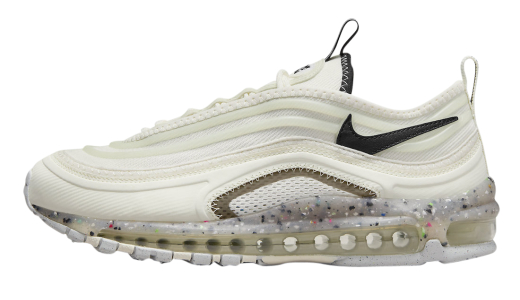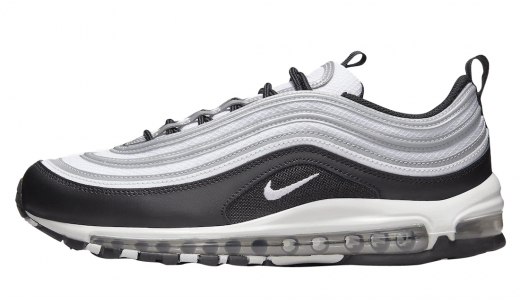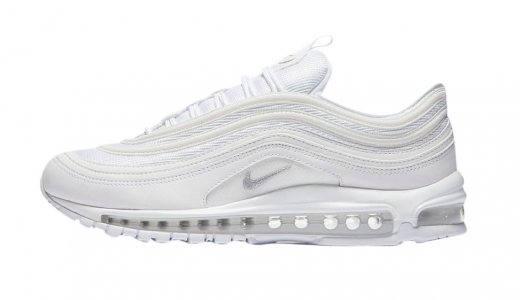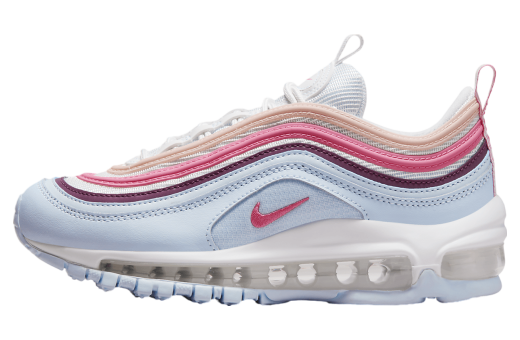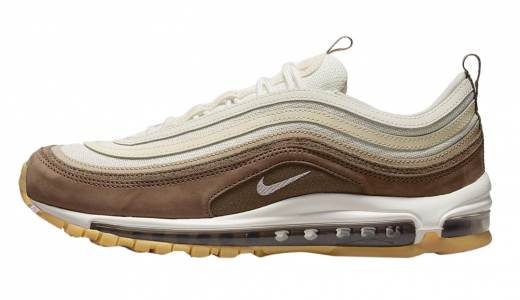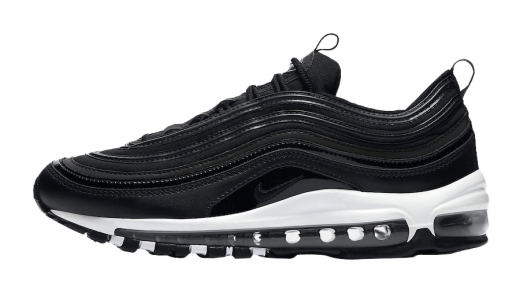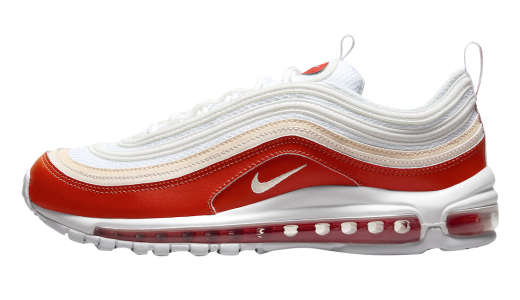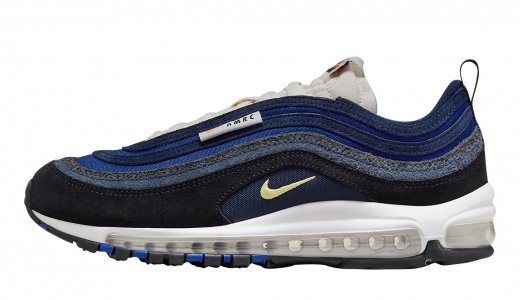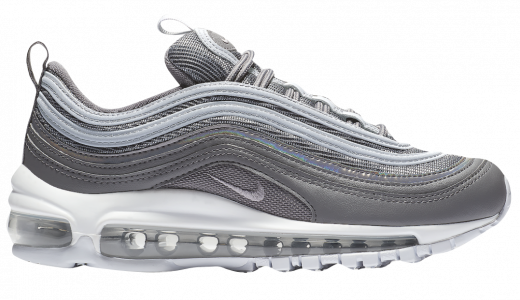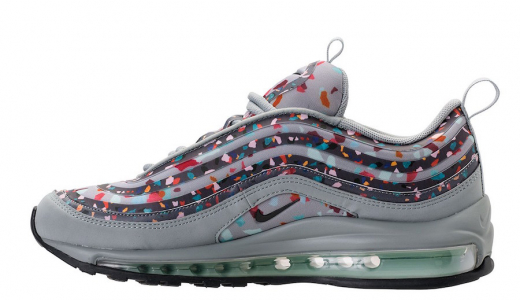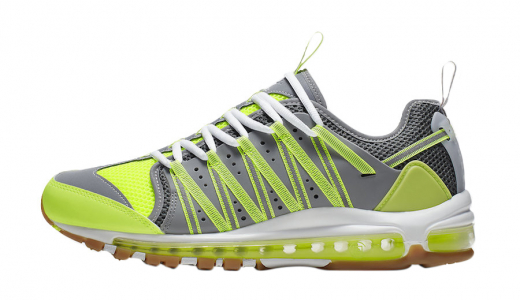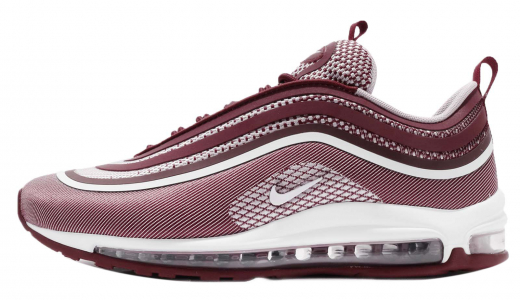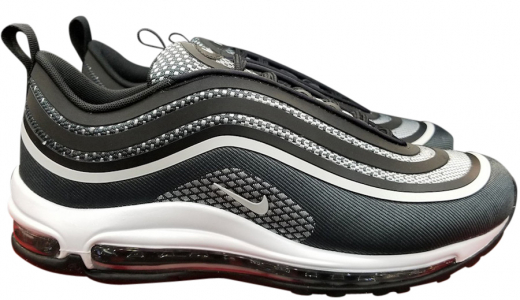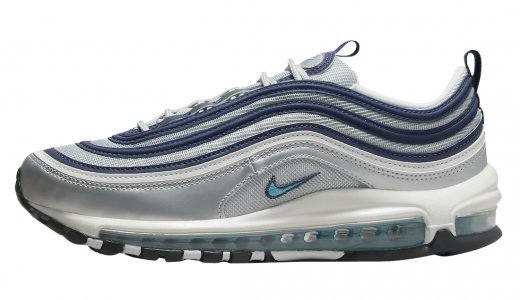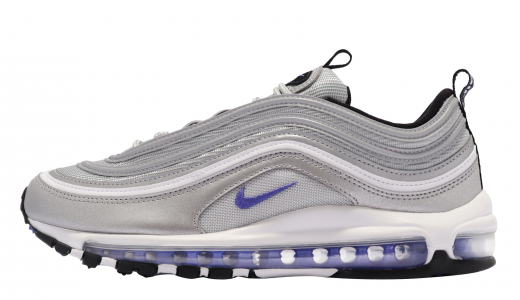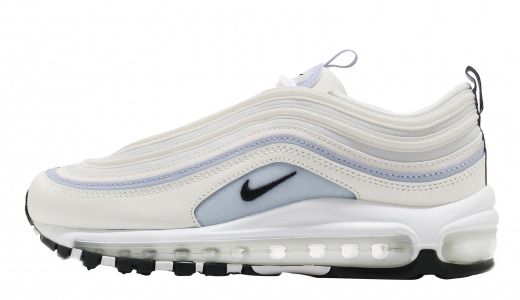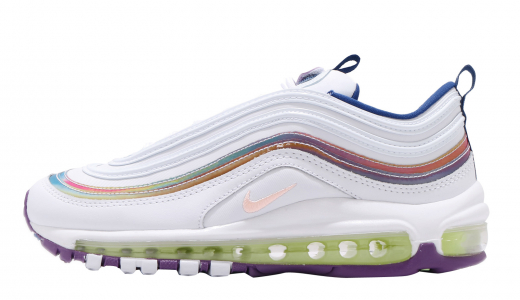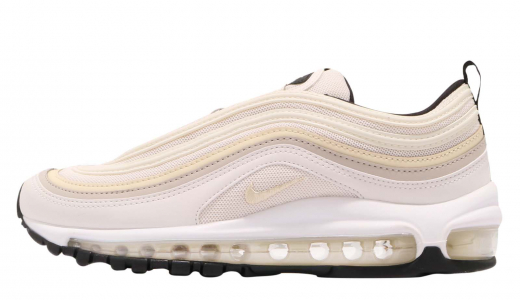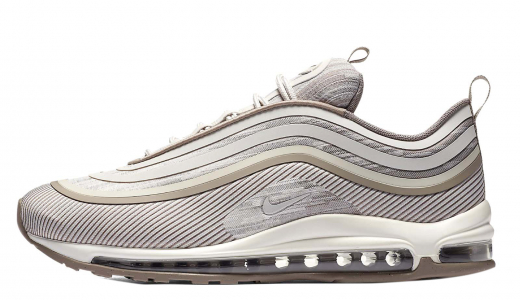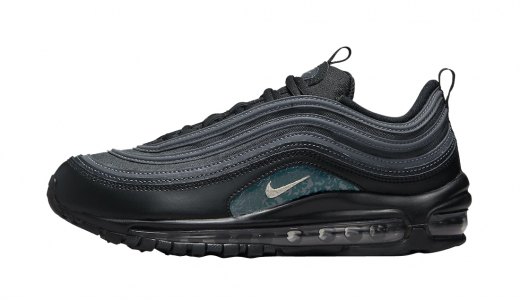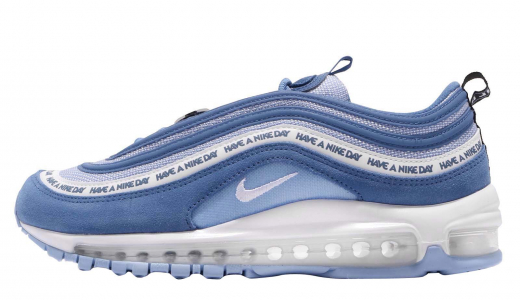Nike Air Max 97
The Nike Air Max 97 is an iconic silhouette that revolutionized sneaker design when it was first introduced in 1997. Known for its sleek, futuristic aesthetic inspired by Japanese bullet trains, the Air Max 97 features a distinctive wavy panel construction and a full-length visible Air unit, the first of its kind. This design allows for unparalleled cushioning and support, making it not only a fashion statement but also a functional piece of athletic footwear. The shoe quickly garnered a cult following and has remained a staple in the sneaker world, celebrated for its blend of innovation and style. Over the years, the Air Max 97 has been released in numerous colorways and collaborations, solidifying its place as a timeless classic.
What sets the Nike Air Max 97 apart is its ability to transcend cultural boundaries, appealing to a wide array of sneaker enthusiasts, athletes, and fashion-forward individuals alike. The shoe's versatile design makes it suitable for various settings, from casual outings to more sophisticated urban environments. The Air Max 97 has also found its way into the realms of music and popular culture, endorsed by several prominent figures and frequently featured in music videos and streetwear fashion shoots. As trends evolve, the Nike Air Max 97 continues to adapt, with Nike often releasing updated versions that incorporate modern materials and technologies while retaining the fundamental elements that made the original so beloved. This enduring appeal ensures that the Air Max 97 will remain a defining piece of sneaker history for years to come.
History of Nike Air Max 97
The History of Nike Air Max 97: A Revolution in Footwear
The Nike Air Max 97 has left an indelible mark on the world of sneakers since its release. Recognized for its sleek design and technological innovations, the Air Max 97 has become a cultural icon. This comprehensive history explores the origins, development, cultural impact, and enduring legacy of this remarkable shoe.
I. Origins and Conception
The story of the Nike Air Max 97 begins in the 1990s, a decade known for its bold experimentation in fashion and technology. Nike, already an industry leader, sought to push the boundaries of sneaker design further. The Air Max series, first introduced in 1987 with the Air Max 1, featured visible air cushioning, a revolutionary innovation that changed the landscape of athletic footwear.
By 1997, Nike had released several iterations of the Air Max, each gaining popularity for both performance and style. Amid this thriving atmosphere, designer Christian Tresser was tasked with creating a new model that would embody the spirit of the time and push past existing limitations.
Tresser drew inspiration from an unlikely source: Japan's high-speed bullet trains, or Shinkansen. The futuristic, sleek, and streamlined look of these trains deeply influenced the shoe's aesthetics. The idea was to create a design that epitomized speed, fluidity, and modernity.
II. Design and Technological Innovations
The Nike Air Max 97 was groundbreaking, both in terms of design and technology. The shoe's upper featured a series of wavy, reflective lines, resembling the ripples caused by water drops, further emphasizing its dynamic and fluid nature. This reflective design was not only aesthetically impressive but also practical for low-light conditions, making the wearer more visible.
One of the most iconic features of the Air Max 97 was its full-length air cushioning system. Previous Air Max models had visible air units, but the Air Max 97 was the first to extend this technology throughout the entire sole. This provided unparalleled shock absorption and cushioning, making it a favorite among athletes and casual wearers alike.
The construction materials were also ahead of their time. Nike used a combination of synthetic leather and mesh on the upper, creating a lightweight and breathable shoe. The incorporation of 3M reflective materials provided enhanced visibility, making the shoe not only stylish but also practical for nighttime wear.
III. The Air Max 97's Debut and Initial Reception
The Nike Air Max 97 officially debuted on shelves in late 1997. Initially available in a metallic silver colorway, aptly named the "Silver Bullet," the shoe quickly garnered attention. The "Silver Bullet" colorway became a symbol of futuristic design, capturing the imagination of sneaker enthusiasts around the world.
Upon its release, the Air Max 97 was met with mixed reactions. Some purists found the design too radical, while others praised its bold departure from tradition. Eventually, the shoe's innovative design and state-of-the-art technology won over critics and consumers, marking the beginning of its rise to iconic status.
IV. Cultural Impact and Global Popularity
As the Air Max 97 gained traction, it began to transcend its initial role as a piece of athletic footwear. The shoe's futuristic design and association with cutting-edge technology made it a staple in streetwear fashion. It became particularly popular in Europe, especially in Italy, where it was embraced by the youth culture.
In the United States, the Air Max 97 enjoyed widespread popularity in urban centers. The shoe became a fixture in hip-hop culture, with numerous artists and celebrities sporting the distinctive sneakers. This association with music and fashion further cemented its status as a cultural icon.
In the early 2000s, the Air Max 97's appeal extended to Asia, where it found a devoted fan base. In Japan, particularly, the sneaker became highly sought after, with various collaborations and exclusive releases catering to the local market.
V. Collaborations and Special Editions
The enduring appeal of the Nike Air Max 97 has led to numerous collaborations and special editions over the years. These partnerships have allowed for creative reinterpretations of the classic design, keeping the shoe relevant and exciting for new generations of sneaker enthusiasts.
One of the most notable collaborations was with Italian fashion brand UNDEFEATED in 2017. This collaboration celebrated the Air Max 97's 20th anniversary, featuring unique colorways and branded detailing that paid homage to the shoe's rich history.
Another significant collaboration came from Sean Wotherspoon, a prominent figure in the sneaker community. In 2018, his design won the Nike "Vote Forward" competition, resulting in the release of the Air Max 1/97 SW hybrid. This unique design combined elements from both the Air Max 1 and Air Max 97, featuring a colorful corduroy upper that captured the attention of sneakerheads worldwide.
Nike has also released numerous special editions of the Air Max 97 to commemorate various events and milestones. From limited-edition colorways to themed releases for holidays and cultural celebrations, these iterations have kept the Air Max 97 at the forefront of sneaker culture.
VI. The Air Max 97 in Sports and Athletics
While the Air Max 97 is primarily celebrated for its style and cultural significance, it has also made contributions to the world of sports and athletics. The shoe's innovative air cushioning system provided superior comfort and support, making it a viable option for athletes in various disciplines.
In running, the Nike Air Max 97 offered an alternative to traditional running shoes. The full-length air cushioning provided a unique feel and enhanced shock absorption, which appealed to runners seeking a different experience. Though not necessarily designed as a high-performance running shoe, it found a niche among those valuing comfort and style.
Basketball players also took notice of the Air Max 97's innovative design. The shoe's impact-absorbing sole and supportive structure made it suitable for the demands of the sport. While not as prevalent on the courts as other Nike basketball models, the Air Max 97 earned respect among athletes and enthusiasts alike.
VII. Enduring Legacy and Modern Popularity
The Nike Air Max 97's legacy is defined by its enduring popularity and relevance in contemporary fashion and sneaker culture. Despite being over two decades old, the design remains fresh and influential, continuing to inspire new iterations and adaptations.
In recent years, the resurgence of '90s fashion has brought renewed attention to the Air Max 97. Nostalgia-driven trends have led to a revival of interest in classic sneakers, and the Air Max 97 is often at the forefront of this movement. Its unique design and historical significance make it an attractive option for those seeking to relive or emulate the fashion of the era.
Social media and online sneaker communities have also played a crucial role in maintaining the Air Max 97's popularity. Sneakerheads and enthusiasts share their collections, styling tips, and reviews, creating a vibrant virtual community centered around their passion for the shoe.
VIII. Environmental and Sustainability Initiatives
In response to growing concerns about sustainability, Nike has taken steps to address the environmental impact of its products, including the Air Max 97. Modern iterations of the shoe incorporate sustainable materials and more eco-friendly manufacturing processes.
Nike's "Move to Zero" initiative focuses on reducing carbon emissions and waste in the production of its footwear. The use of recycled materials in the construction of the Air Max 97 is one example of how the brand is working towards a more sustainable future. These efforts not only appeal to environmentally-conscious consumers but also reflect Nike's commitment to innovation and responsibility.
IX. The Future of the Air Max 97
As the Nike Air Max 97 approaches its third decade, its future looks bright. The sneaker industry continues to evolve, with new technologies and design philosophies shaping the landscape. However, the core elements that made the Air Max 97 iconic – its innovative air cushioning, distinctive design, and cultural relevance – ensure that it will remain a vital part of Nike's legacy.
Collectors and enthusiasts eagerly anticipate future releases and collaborations, speculating on how the Air Max 97 will be reimagined. Whether through advancements in materials, new colorways, or unexpected partnerships, the Air Max 97 is poised to continue its legacy as a trailblazer in the world of sneakers.
X. Conclusion
The history of the Nike Air Max 97 is a testament to the power of innovation and design. From its humble origins inspired by Japanese bullet trains to its current status as a cultural icon, the Air Max 97 has captivated generations of sneaker enthusiasts and fashion-forward individuals.
Its journey is marked by groundbreaking technological advancements, bold design choices, and a lasting impact on global culture. The Air Max 97's legacy is not just about a shoe; it represents a moment in time, a fusion of art and technology that continues to shape the future of footwear.
In the ever-changing world of fashion and sneakers, the Nike Air Max 97 remains a constant – a symbol of progress, creativity, and the enduring appeal of a classic design. Its story is far from over, and as it continues to evolve, the Air Max 97 will undoubtedly inspire new generations to appreciate the beauty and innovation that it represents.
